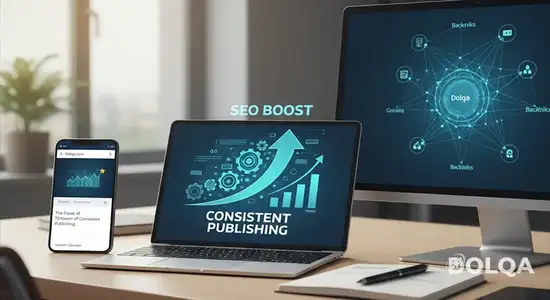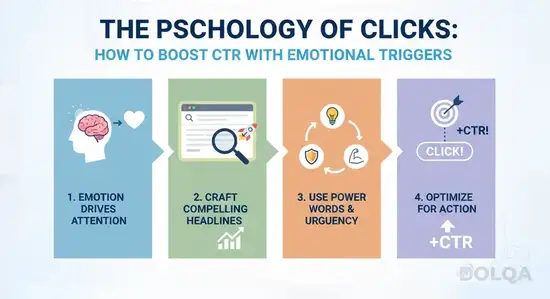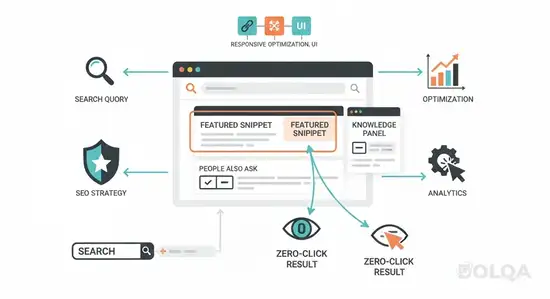Introduction
In the ever-evolving landscape of search engine optimization, understanding what triggers Google penalties has become paramount for website owners, SEO professionals, and digital marketers. Google's sophisticated algorithms continuously scan millions of websites, identifying violations that compromise user experience, manipulate search rankings, or violate webmaster guidelines. These penalties can devastate a website's organic traffic, sometimes reducing visibility by 50-95% overnight.
This comprehensive technical guide explores the critical factors that destroy websites in the eyes of Google's ranking systems, the mechanisms behind Google punishment, and advanced solutions for prevention and recovery. Whether you're managing enterprise websites or smaller digital properties, understanding these technical pitfalls is essential for maintaining sustainable search engine visibility.
Understanding Google Penalties: Types and Mechanisms
Manual vs. Algorithmic Penalties
Google penalties fall into two distinct categories, each requiring different recovery approaches:
Manual Penalties occur when Google's human reviewers identify violations and manually apply sanctions. These penalties appear in Google Search Console with specific notifications explaining the violation. Manual actions typically target severe infractions like unnatural link schemes, thin content, or user-generated spam.
Algorithmic Penalties result from automated systems detecting problematic patterns. Core algorithm updates, Penguin (link quality), Panda (content quality), and newer AI-detection systems can demote websites without direct notification. These are technically "demotions" rather than penalties, but the impact on rankings remains severe.
How Search Engines Detect Violations
Modern search engines employ sophisticated machine learning models, natural language processing, and pattern recognition algorithms to evaluate websites across hundreds of ranking factors. Google's systems analyze:
- Content originality and quality signals
- Link graph patterns and anchor text distributions
- User engagement metrics and behavioral data
- Technical infrastructure and page experience indicators
- Historical data and velocity of changes
Black-Hat SEO Techniques That Guarantee Punishment
Keyword Stuffing and Over-Optimization
Excessive keyword density remains one of the most common violations. While SEO requires strategic keyword placement, manipulation tactics trigger penalties:
- Unnatural keyword density exceeding 3-5% of total content
- Hidden text matching background colors or using CSS to hide keyword-stuffed content
- Irrelevant keyword injection forcing keywords into contexts where they don't naturally fit
- Title and meta tag stuffing cramming multiple variations of keywords
Modern natural language processing algorithms easily detect these patterns by analyzing semantic relationships and contextual appropriateness.
Cloaking and Deceptive Practices
Cloaking involves presenting different content to search engine crawlers versus human visitors-a severe violation that often results in complete deindexing:
- User-agent cloaking detecting Googlebot and serving optimized content
- IP-based cloaking identifying Google's IP ranges for differential content delivery
- JavaScript cloaking manipulating content after initial page load
- Doorway pages creating low-quality landing pages optimized for specific queries that redirect users
These techniques violate Google's fundamental principle of providing searchers with content that matches what crawlers evaluated.
Link Scheme Manipulation
Despite years of algorithm updates, manipulative link building remains a primary penalty trigger:
Private Blog Networks (PBNs) – Networks of interlinked websites created solely to manipulate PageRank. Google's link graph analysis easily identifies these patterns through:
- Similar IP ranges and hosting footprints
- Cross-linking patterns
- Thin or duplicate content across network sites
- Unnatural anchor text distributions
Paid Links Without Disclosure - Purchasing backlinks violates Google's guidelines unless properly disclosed with rel="nofollow" or rel="sponsored" attributes.
Link Farms and Reciprocal Schemes - Excessive reciprocal linking or participation in link exchange programs creates detectable patterns that trigger penalties.
Automated Link Building - Using software to automatically generate forum profiles, blog comments, or directory submissions with optimized anchor text.
Content-Related Violations Destroying Website Rankings
Thin and Low-Quality Content
Google's quality algorithms heavily penalize websites with insufficient or low-value content:
- Thin affiliate pages with minimal original content and primarily affiliate links
- Auto-generated content created through content spinning or template-based systems
- Scraped content copied from other websites without adding substantial value
- Short-form pages lacking depth on topics requiring comprehensive coverage
Quality guidelines specify that content should provide significant value, unique perspectives, and comprehensive information matching search intent.
Duplicate Content Issues
While duplicate content doesn't always trigger penalties, extensive duplication creates serious SEO problems:
- Internal duplication – Multiple URLs with identical or nearly identical content dilute ranking signals
- Cross-domain duplication – Republishing content across multiple domains without proper canonicalization
- Scraped duplicate content – Copying content from authoritative sources without permission or value addition
- Printer-friendly and session ID duplicates – Technical issues creating multiple URL versions
The AI Content Detection Challenge
The rise of AI writing tools has introduced new penalty considerations. Google's stance emphasizes that automatically generated content designed to manipulate rankings violates guidelines, regardless of creation method.
Detection Indicators:
- Unnatural writing patterns and repetitive structures
- Lack of expertise, experience, authoritativeness, and trustworthiness (E-E-A-T)
- Factual inaccuracies or generic information without original insights
- Missing human editorial oversight and fact-checking
Important Distinction: Google doesn't penalize AI-assisted writing per se, but rather low-quality content that fails to meet user needs. High-quality AI-generated content properly reviewed and enhanced by human experts may not face penalties, though this remains a controversial and evolving area.
Technical SEO Violations and Infrastructure Issues
Poor Mobile Experience and Core Web Vitals
Since mobile-first indexing became Google's default, mobile optimization failures directly impact rankings:
Core Web Vitals violations:
- Largest Contentful Paint (LCP) exceeding 2.5 seconds indicates slow loading performance
- First Input Delay (FID) or Interaction to Next Paint (INP) above 200ms reflects poor responsiveness
- Cumulative Layout Shift (CLS) over 0.1 creates frustrating visual stability issues
Additional mobile problems include:
- Unplayable content requiring Flash or unsupported plugins
- Viewport configuration issues causing horizontal scrolling
- Touch elements too close together
- Text too small to read without zooming
Security Vulnerabilities and Malware
Compromised websites face immediate penalties and warning labels:
- Malware infections – Viruses, trojans, or malicious code downloaded to visitors' devices
- Phishing attempts – Deceptive pages collecting user credentials
- Unwanted software – Installations that occur without clear user consent
- Social engineering attacks – Deceptive content manipulating users into unsafe actions
Google Safe Browsing actively monitors websites, and detected violations trigger both search penalties and browser warnings that devastate user trust and traffic.
Server and Crawling Issues
Technical infrastructure problems prevent proper indexing and ranking:
- Chronic server downtime or frequent 5xx errors
- Robots.txt misconfigurations blocking critical resources or entire sections
- Redirect chains and loops creating crawl inefficiencies
- Slow server response times exceeding 200ms
- Orphaned pages inaccessible through internal linking
- Broken internal links and excessive 404 errors
User Experience Violations and Engagement Penalties
Intrusive Interstitials and Aggressive Advertising
Google penalizes websites that prioritize monetization over user experience:
Penalized interstitial types:
- Pop-ups covering main content immediately after navigation from search results
- Standalone interstitials requiring dismissal before accessing content
- Layouts mimicking interstitials with above-the-fold content obscured
Acceptable exceptions include:
- Legal requirement notices (age verification, cookie consent)
- Login dialogs for private content
- Reasonably-sized banners using minimal screen space
Additional advertising issues:
- Auto-playing video or audio ads
- Ads that push content down unexpectedly (layout shifts)
- Deceptive ad placements mimicking navigation elements
- Excessive ad density reducing content visibility
High Bounce Rates and Poor Engagement Signals
While not direct ranking factors, engagement metrics indicate content-query mismatches:
- Immediate bounces suggest misleading titles or meta descriptions
- Short dwell times indicate content fails to satisfy search intent
- Low page-per-session metrics suggest poor internal linking and content structure
Google's systems use these behavioral signals to evaluate whether pages truly satisfy user queries.
Solutions and Recovery Strategies
Conducting Comprehensive SEO Audits
Recovery begins with identifying specific violations:
- Review Google Search Console for manual action notifications and coverage issues
- Analyze organic traffic patterns identifying when drops occurred to correlate with algorithm updates
- Conduct technical SEO crawls using tools like Screaming Frog or Sitebulb
- Evaluate backlink profiles identifying toxic or unnatural links
- Assess content quality reviewing thin, duplicate, or low-value pages
- Test mobile experience and Core Web Vitals performance
- Security scanning for malware, phishing, or compromised content
Manual Penalty Recovery Process
For confirmed manual actions:
Step 1: Identify ViolationsCarefully read the manual action notification in Search Console specifying the exact violation type.
Step 2: Remediate IssuesAddress every instance of the violation throughout the website:
- Remove or disavow toxic backlinks
- Delete or improve thin content
- Remove cloaking or deceptive practices
- Fix security vulnerabilities
Step 3: Document ChangesCreate comprehensive documentation of all corrective actions taken.
Step 4: Submit Reconsideration RequestFile a detailed reconsideration request explaining:
- Understanding of the violation
- Specific corrective actions implemented
- Measures preventing future violations
Step 5: Patience and MonitoringGoogle typically reviews requests within several days to weeks. Continue monitoring while awaiting response.
Algorithmic Penalty Recovery
Algorithmic demotions require different approaches:
Content Quality Improvements:
- Expand thin content with comprehensive, expert-level information
- Remove low-quality pages or implement 301 redirects to better alternatives
- Add original research, data, expert quotes, and unique perspectives
- Enhance E-E-A-T signals through author bios, credentials, and citations
Link Profile Cleanup:
- Identify unnatural links through backlink analysis tools
- Contact webmasters requesting removal of manipulative links
- Use Google's Disavow Tool for links you cannot remove
- Build natural, editorial links through digital PR and quality content
Technical Optimization:
- Improve Core Web Vitals through performance optimization
- Fix mobile usability issues and responsive design problems
- Resolve crawling errors and server issues
- Implement proper canonicalization and duplicate content handling
Building Sustainable White-Hat SEO Practices
Long-term success requires ethical strategies:
- Content-First Approach: Create comprehensive, expert content serving user needs rather than algorithms
- Natural Link Building: Earn links through quality content, digital PR, and relationship building
- Technical Excellence: Maintain fast, secure, mobile-optimized infrastructure
- User Experience Priority: Design for human visitors first, search engines second
- Continuous Monitoring: Regular audits catching issues before they escalate
- Stay Informed: Follow Google's official communications and algorithm updates
The Role of Artificial Intelligence in Content Creation
The integration of AI writing tools has transformed article writing and content production. However, this evolution demands careful consideration regarding quality and search engine guidelines.
Using AI Responsibly
AI-assisted writing can enhance productivity when implemented correctly:
- Use AI for research, outlining, and initial drafting
- Apply human expertise for fact-checking, analysis, and unique insights
- Edit extensively to ensure natural language and originality
- Add personal experiences, case studies, and expert perspectives
- Verify all factual claims through authoritative sources
Quality Over Automation
The key distinction lies in using AI as a tool rather than replacement for human expertise. Content must demonstrate:
- Experience: First-hand knowledge and practical application
- Expertise: Deep subject matter understanding
- Authoritativeness: Recognition within the field
- Trustworthiness: Accuracy, transparency, and ethical practices
Emerging Penalty Factors and Future Considerations
AI-Generated Content at Scale
As AI writing becomes more sophisticated, Google continues refining detection methods. Websites producing high volumes of thin AI content without human oversight face increasing scrutiny.
User Experience Signals
Google increasingly prioritizes behavioral metrics and user satisfaction signals. Future penalties may more heavily weight:
- Task completion rates
- Content helpfulness assessments
- User satisfaction surveys integrated into search results
- Return-to-SERP rates after clicking through
Sustainability and Accessibility
Emerging ranking factors may include:
- Web accessibility compliance (WCAG standards)
- Environmental impact metrics (website carbon footprint)
- Inclusive design considerations
Conclusion
Navigating Google's complex penalty landscape requires technical expertise, ethical practices, and continuous vigilance. The factors that destroy website rankings-from black-hat SEO manipulation to poor user experience-are increasingly sophisticated in detection and severe in consequences. However, understanding these mechanisms empowers website owners to build sustainable, penalty-resistant digital properties.
The emergence of AI writing tools adds new dimensions to content quality considerations, demanding that creators focus on human expertise, original insights, and genuine user value rather than automated content production at scale. Success in modern SEO requires balancing efficiency with quality, automation with human judgment, and optimization with user-centricity.
By implementing the solutions outlined in this guide-comprehensive audits, ethical link building, technical excellence, and content quality prioritization-you can protect your website from Google punishment while building long-term organic visibility. The investment in white-hat SEO practices not only prevents penalties but creates sustainable competitive advantages in increasingly crowded search engine results pages.
Remember that search engine optimization is not about gaming algorithms but about genuinely serving user needs better than competitors. When this principle guides every decision, penalty avoidance becomes natural, and rankings become sustainable.
What experiences have you had with Google penalties? Share your recovery stories and questions in the comments below.
References and Sources
Google Search Central Documentation. "Webmaster Guidelines." Google Developers, 2024. https://developers.google.com/search/docs/essentials
Google Search Central Blog. "How Google's Algorithm Updates Work." Google, 2024. https://developers.google.com/search/blog
Sullivan, Danny. "Google's Guidance on AI-Generated Content." Google Search Liaison, 2024. https://twitter.com/searchliaison
Mueller, John. "Manual Actions and Algorithmic Demotions Explained." Google Search Central YouTube Channel, 2024.
"Core Web Vitals: Essential Metrics for Web Performance." Web.dev, Google, 2024. https://web.dev/vitals/
Fishkin, Rand. "The Evolution of Google Penalties: 2010-2024." SparkToro Blog, 2024.
Google Search Quality Evaluator Guidelines. Google, 2024. https://static.googleusercontent.com/media/guidelines.raterhub.com/
"Understanding E-E-A-T and Quality Assessment." Google Search Central, 2024.
"Google Safe Browsing: Protecting Users from Malicious Sites." Google Transparency Report, 2024.
Dean, Brian. "Google Ranking Factors: Complete List." Backlinko, 2024.
Illyes, Gary. "Technical SEO Best Practices." Google Search Central, 2024.
"Mobile-First Indexing Best Practices." Google Search Central Documentation, 2024.







Comments (0)
Leave a Comment
No comments yet. Be the first to comment!